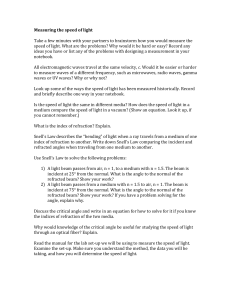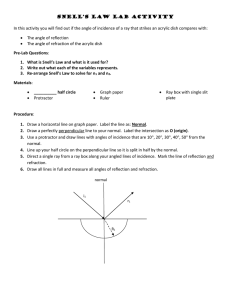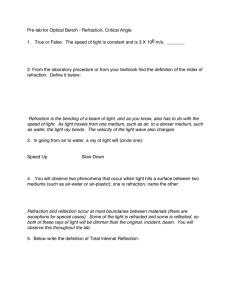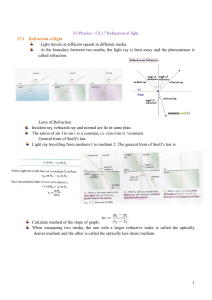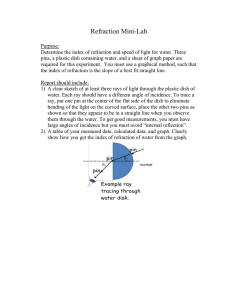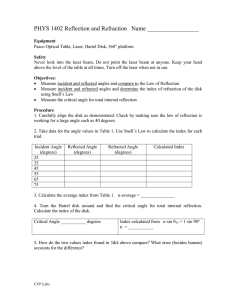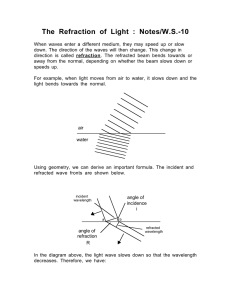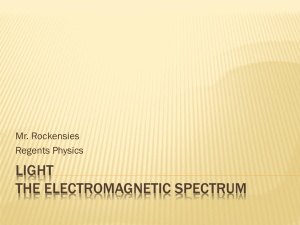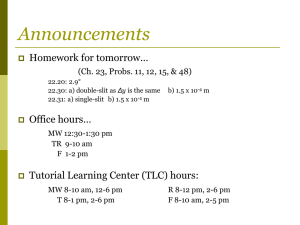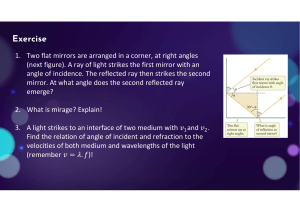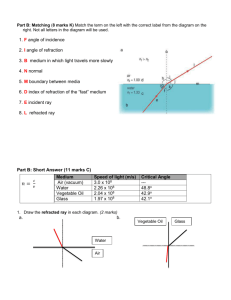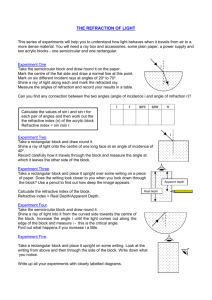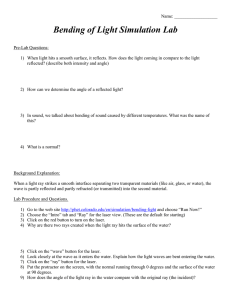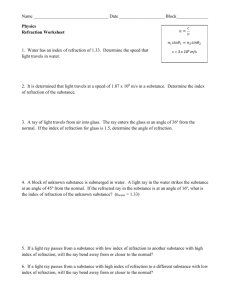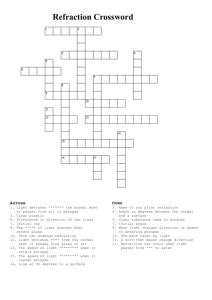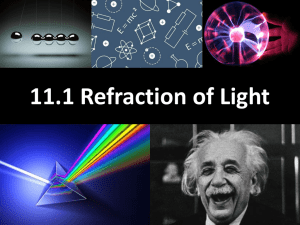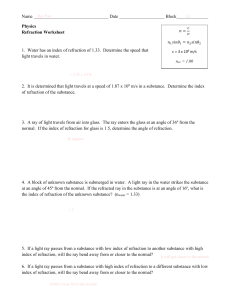Refraction of Light and Snell`s Law
advertisement
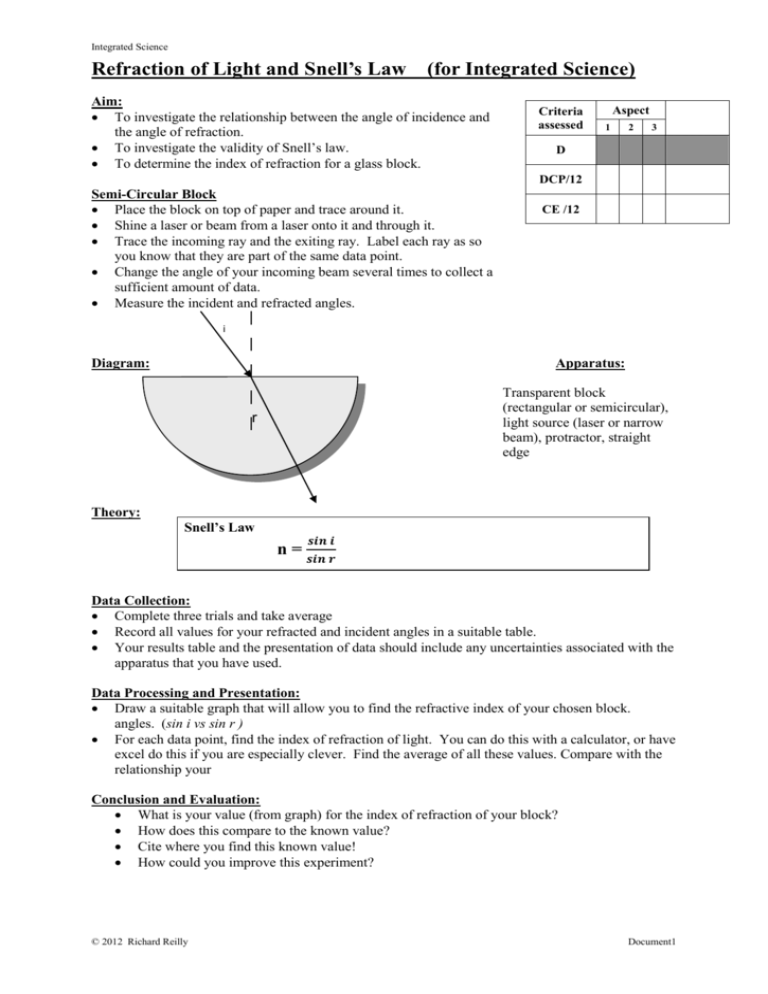
Integrated Science Refraction of Light and Snell’s Law (for Integrated Science) Aim: To investigate the relationship between the angle of incidence and the angle of refraction. To investigate the validity of Snell’s law. To determine the index of refraction for a glass block. Criteria assessed Aspect 1 2 3 D DCP/12 Semi-Circular Block Place the block on top of paper and trace around it. Shine a laser or beam from a laser onto it and through it. Trace the incoming ray and the exiting ray. Label each ray as so you know that they are part of the same data point. Change the angle of your incoming beam several times to collect a sufficient amount of data. Measure the incident and refracted angles. CE /12 i Diagram: Apparatus: Transparent block (rectangular or semicircular), light source (laser or narrow beam), protractor, straight edge r Theory: Snell’s Law n= 𝒔𝒊𝒏 𝒊 𝒔𝒊𝒏 𝒓 Data Collection: Complete three trials and take average Record all values for your refracted and incident angles in a suitable table. Your results table and the presentation of data should include any uncertainties associated with the apparatus that you have used. Data Processing and Presentation: Draw a suitable graph that will allow you to find the refractive index of your chosen block. angles. (sin i vs sin r ) For each data point, find the index of refraction of light. You can do this with a calculator, or have excel do this if you are especially clever. Find the average of all these values. Compare with the relationship your Conclusion and Evaluation: What is your value (from graph) for the index of refraction of your block? How does this compare to the known value? Cite where you find this known value! How could you improve this experiment? © 2012 Richard Reilly Document1
